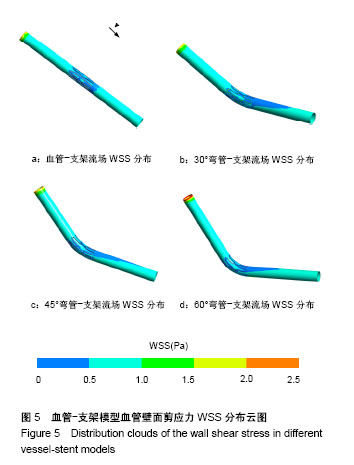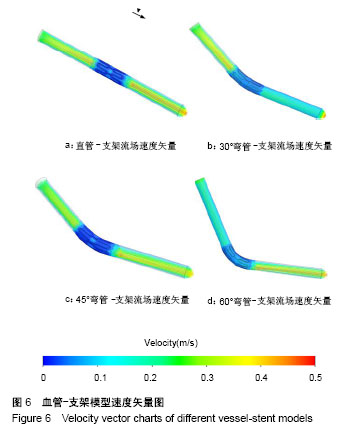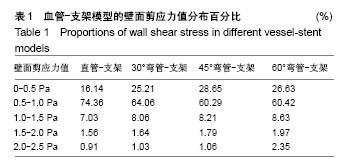中国组织工程研究 ›› 2018, Vol. 22 ›› Issue (22): 3563-3568.doi: 10.3969/j.issn.2095-4344.0886
• 材料力学及表面改性 material mechanics and surface modification • 上一篇 下一篇
冠状动脉支架在弯曲血管中的血流动力学分析
唐 丹,袁 泉,王志超,朱宏伟
- 山东大学高效洁净机械制造教育部重点实验室,山东省济南市 250061
Hemodynamic analysis of coronary stents in curved vessels
Tang Dan, Yuan Quan, Wang Zhi-chao, Zhu Hong-wei
- Key Laboratory of High Efficiency and Clean Mechanical Manufacture, Shandong University, Ministry of Education, Jinan 250061, Shandong Province, China
摘要:
文章快速阅读:
.jpg)
壁面剪应力:体内和体外研究表明,冠状动脉支架植入人体后,在壁面剪应力小于0.5 Pa的区域,会有内膜增生、血栓的现象发生,即产生再狭窄,相反,高于此值的部分则不会有新生内膜出现。
结果与结论:①模型中无支架部位的壁面剪应力基本一致,均在0.5-1.0 Pa,且无论是在直管-支架流场模型还是在弯管-支架流场模型中,低WSS值都分布在支架筋的侧面区域;在弯管中,支架末端多出现了大面积的低WSS区域;②在直管-支架模型中,WSS< 0.5 Pa面积占总面积的百分比为16.14%,在30°,45°,60°弯管-支架模型中,WSS< 0.5 Pa面积占总面积的百分比依次为25.21%,28.65%,26.63%,均大于直管内支架,即弯曲血管内支架再狭窄率相对较高;③所有弯管-支架模型中WSS的分布基本一致,与曲率无关;④弯管-支架模型(30°,45°,60°)流阻均大于直管-支架模型[1.50,1.82,2.17,1.03 N•s2/(kg•m)];⑤结果表明,弯曲血管内支架再狭窄率相对较高。
ORCID: 0000-0001-8052-5058(唐丹)
中图分类号:



.jpg)

.jpg)
.jpg)